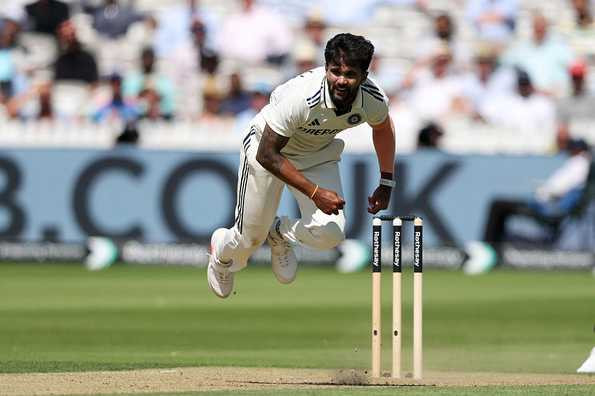On the sun-baked opening day of the Lord’s Test, it took India just four deliveries to sense that the tactics successful at Edgbaston might not yield immediate results here. Despite Jasprit Bumrah finding the outside edge in his opening over, a wicket didn’t materialize until late in the final session. Even before the early match excitement settled, Bumrah was already signaling the slip cordon to move a step closer, indicating that edges were not carrying on the slow surface.
Earlier signs also suggested a departure from the familiar aggressive Test cricket often seen in England. Ben Stokes won the toss on a pitch resembling a pressed cream biscuit under a clear sky and elected to bat first, a decision he had made only once before in a home Test since 2022. With five consecutive days of 30-degree temperatures forecast, conditions seemed ripe for England’s ‘Bazball’ approach to flourish. However, India opted to neutralize that tempo.
During a quiet period after Lunch, Shubman Gill’s voice was heard through the stump mic, half-jokingly declaring, “Welcome to boring cricket, guys.” This came as England, known for setting the pace, endured a passage of 28 balls without scoring a run. Bumrah and Mohammed Siraj had started the session with quiet concentration, bowling almost exclusively to a single batter each – Bumrah to Ollie Pope and Siraj to Joe Root – applying a slow, continuous squeeze.
The subsequent session unfolded in an unusual manner. India took no wickets, yet well-established, dominant batters like Root and Pope managed only 70 runs between them. Even after Bumrah and Siraj completed their spells, India maintained their commitment to their plan: deliberately crafting the day to be old-fashioned, ball by ball, as a direct counter to Bazball. Significantly, England’s batters chose not to make it a display of ego, opting instead to wait and exercise restraint.
 India bowler strategizes during the disciplined Test match against England at Lord's
India bowler strategizes during the disciplined Test match against England at Lord's
Traditionally, Test cricket in England is heavily focused on the off-side, with fast bowlers targeting areas just outside off stump to draw edges towards slips and gully, building pressure before a surprise straight delivery. At Edgbaston just four days prior, India had inverted this, bowling straighter, targeting the stumps more frequently, and packing the leg-side field with two catching mid-wickets – a strategy that proved effective there.
While the ball did swing more at Lord’s in the initial 40 overs compared to Leeds or Birmingham, the slow pitch and low bounce afforded England’s batters time to adapt. Despite this, and the expected complaints about the ball losing shape, England did not break free into their usual high-scoring bursts.
India consistently pushed their bowlers wider. Shubman Gill instructed his seamers to target sixth-stump lines, supported by a 6-3 off-side field setup. According to CricViz data, 25.7% of deliveries bowled by India’s seamers were outside the off-stump channel, a notable increase from 15.6% at Headingley and 11.8% at Edgbaston. Conversely, only 19.8% of deliveries were on the stumps, down from 26.5% in the previous match.
This shift might have been even more pronounced were it not for Akash Deep and Mohammed Siraj, who sometimes bowled straighter lines, particularly from the Pavilion End where the slope occasionally caused the ball to drift down the pads, offering easier scoring opportunities. Akash, in fact, had the highest percentage (24.7%) of balls hitting the stumps among India’s seamers and also the highest economy rate, suggesting the conditions at Lord’s necessitated subtle adjustments to line and length.
Despite minor deviations, India effectively muzzled England through disciplined bowling. Nitish Reddy, playing in only his second Test in England and claiming two of England’s four wickets, prioritized patience over attempting a highlight-reel delivery. He found swing but chose control over seeking a magic ball, recognizing it was the required approach. At Edgbaston, India could employ a short-ball tactic against Jamie Smith and afford to concede runs because they held a substantial lead of over 500 runs, allowing them to exchange runs for wickets. However, on this first day at Lord’s against a potentially dominant batting lineup, the discipline preached by bowling coach Morne Morkel – patience, sticking to the plan, and playing the waiting game – was paramount.
England, interestingly, respected India’s disciplined approach and mirrored that restraint, resulting in a rare, deliberately crafted tempo. The day concluded with India taking just four wickets but successfully limiting England to their second-lowest scoring rate in a day’s play during the Bazball era. The hosts consciously avoided overt flair, choosing instead to build a foundation for the future battles within the match.



